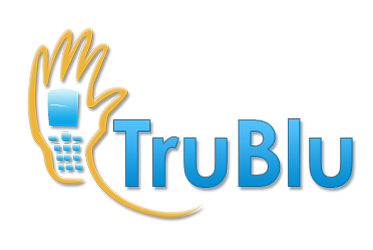Optimizing your call-to-action (CTA) is a crucial aspect of any lead generation strategy. A well-crafted CTA can make all the difference in converting a potential customer into an actual lead. It’s the final push that encourages visitors to take action on your website, whether it’s filling out a form, making a purchase, or downloading a resource.
The process of optimizing your CTA involves a combination of theories, A/B testing, and psychological elements. By understanding what motivates your target audience, you can create the perfect call-to-action that resonates with them and prompts them to take action. This can include everything from the color and placement of the button to the wording of the text itself. With so many variables to consider, it’s essential to test different options to see what works best for your specific audience.
Ultimately, the goal of optimizing your call-to-action is to increase the number of leads generated from your website. By creating a clear and compelling CTA that speaks directly to your target audience, you can improve your conversion rates and drive more business. Whether you’re a B2B company looking to generate more leads or an ecommerce business looking to increase sales, a well-optimized CTA is a vital component of any successful digital marketing strategy.
Table of Contents
ToggleUnderstanding Call-To-Action (CTA) Optimization
A Call-to-Action (CTA) is a prompt that encourages website visitors to take a specific action, such as making a purchase or filling out a form. Optimizing CTAs is an essential part of lead generation because it helps convert website visitors into leads.
To optimize CTAs, it’s important to consider the following factors:
- Placement: CTAs should be placed in a prominent location on the website, such as above the fold or at the end of a blog post.
- Design: CTAs should be visually appealing and stand out from the rest of the page. Using contrasting colors and bold text can help draw attention to the CTA.
- Copy: The copy of the CTA should be clear and concise, using action-oriented language to encourage visitors to take action.
- Testing: A/B testing can help determine which CTAs are the most effective in generating leads.
It’s important to note that there is no one-size-fits-all approach to CTA optimization. What works for one website may not work for another. Therefore, it’s important to continually test and tweak CTAs to find the best approach for your specific audience and goals.
Overall, optimizing CTAs is a crucial part of lead generation and can have a significant impact on conversion rates. By considering factors such as placement, design, copy, and testing, website owners can create effective CTAs that encourage visitors to take action and become leads.
Importance of CTA Optimization
Optimizing your Call-to-Action (CTA) is crucial for generating leads and increasing conversions. A well-designed CTA can help guide users towards taking a desired action, such as filling out a form or making a purchase. In this section, we will discuss the importance of CTA optimization and how it can benefit your business.
Boosting Conversion Rates
A well-optimized CTA can significantly boost your conversion rates. By using clear and concise language, and placing your CTA in a prominent location on your website, you can encourage users to take action. Additionally, using contrasting colors and bold text can help draw attention to your CTA, making it more visible and effective.
Improving User Experience
Optimizing your CTA can also improve the user experience on your website. By providing users with clear and concise instructions, you can help them navigate your website more easily. Additionally, by using language that is relevant to your target audience, you can make your CTA more appealing and engaging.
Increasing Website Traffic
Finally, optimizing your CTA can help increase website traffic. By using targeted keywords and phrases, you can improve your search engine rankings and attract more visitors to your website. Additionally, by using social media and other marketing channels to promote your CTA, you can drive more traffic to your website and increase your chances of generating leads.
In conclusion, optimizing your CTA is essential for generating leads and increasing conversions. By using clear and concise language, contrasting colors, and relevant keywords, you can create a CTA that is both effective and appealing. By following these best practices, you can improve your website’s user experience, increase traffic, and ultimately, boost your bottom line.
Effective CTA Design Strategies
When it comes to optimizing your Call-to-Action (CTA) for lead generation, design plays a crucial role. Your CTA should be visually appealing and stand out on the page, while also being clear and concise in its messaging. Here are some effective CTA design strategies to consider:
Color and Typography
The color and typography of your CTA can make a big difference in its effectiveness. Consider using contrasting colors to make your CTA stand out from the rest of the page. Use bold or italicized text to draw attention to the most important words. Sans-serif fonts tend to be more legible on digital screens, so consider using them for your CTA text.
Placement and Size
The placement and size of your CTA can also impact its effectiveness. Generally, it’s best to place your CTA above the fold, where it’s immediately visible to the user. The size of your CTA should be large enough to be noticed, but not so large that it dominates the page. A good rule of thumb is to make your CTA button at least 44 pixels in height and width.
Wording and Messaging
The wording and messaging of your CTA is perhaps the most important aspect of its design. Use clear and concise language that tells the user exactly what they’ll get by clicking on the button. Avoid using vague or generic language like “click here” or “submit.” Instead, use action-oriented language that creates a sense of urgency and encourages the user to take action.
Here’s an example of a well-designed CTA:

By following these effective CTA design strategies, you can increase the chances of your CTA generating leads and conversions.
Lead Generation Basics
Lead generation is the process of identifying and cultivating potential customers for your business. The goal of lead generation is to create interest in your product or service and convert that interest into sales. In other words, lead generation is the first step in the sales process.
There are many ways to generate leads, including online advertising, content marketing, social media marketing, email marketing, and more. The key is to find the methods that work best for your business and target audience.
When it comes to lead generation, it’s important to keep in mind that quality is more important than quantity. It’s better to have a smaller number of high-quality leads that are likely to convert into customers than a large number of low-quality leads that are unlikely to convert.
To generate high-quality leads, it’s important to understand your target audience and create content and messaging that resonates with them. This means doing research on your target audience, understanding their pain points and needs, and creating content that addresses those needs.
In addition, it’s important to have a clear call-to-action (CTA) on your website and other marketing materials. A CTA is a button or link that encourages the user to take a specific action, such as filling out a form or making a purchase. A clear and compelling CTA can help increase conversions and generate more leads.
Overall, lead generation is an essential part of any successful marketing strategy. By understanding your target audience, creating high-quality content, and having a clear CTA, you can generate more leads and grow your business.
The Role of CTA in Lead Generation
CTAs are essential components of any lead generation strategy. They are the prompts that encourage website visitors to take the next step in the marketing funnel. A well-crafted CTA can attract potential leads and convert visitors into leads.
Attracting Potential Leads
CTAs attract potential leads by providing a clear and compelling value proposition. They should be visible and easy to find on the website or landing page. The language used in the CTA should be persuasive and action-oriented.
Here are some best practices for creating CTAs that attract potential leads:
- Use action verbs like “download,” “register,” “subscribe,” or “request” to prompt action.
- Highlight the benefits of taking action with the CTA, such as “Get your free guide now!” or “Sign up for exclusive access.”
- Use contrasting colors to make the CTA stand out on the page.
- Place the CTA above the fold, so visitors do not have to scroll down to find it.
Converting Visitors into Leads
CTAs are also critical in converting visitors into leads. They guide visitors to take the desired action, such as filling out a form or subscribing to a newsletter. The language used in the CTA should be clear and concise, explaining what visitors can expect after taking action.
Here are some best practices for creating CTAs that convert visitors into leads:
- Use a clear and concise message that explains what visitors can expect after taking action.
- Keep the form fields to a minimum to reduce friction and increase conversions.
- Use social proof, such as customer testimonials or trust badges, to increase credibility and trust.
- Use urgency to create a sense of FOMO (fear of missing out), such as “Limited time offer” or “Only a few spots left.”
In conclusion, CTAs play a crucial role in lead generation. They attract potential leads and guide visitors to take the desired action, ultimately converting them into leads. By following best practices for creating compelling CTAs, businesses can optimize their lead generation strategy and increase conversions.
Testing and Measuring CTA Performance
To optimize your CTA and generate more leads, it’s important to test and measure its performance. This can be done through A/B testing, analytics, and insight.
A/B Testing
A/B testing, also known as split testing, involves testing different variations of your CTA to see which one generates more leads. For example, you can test different colors, wording, placement, and size of your CTA button to see which one performs better.
To conduct an A/B test, you can use online tools such as Google Optimize, Optimizely, or VWO. These tools allow you to create different variations of your CTA and split your traffic between them. You can then measure the performance of each variation and choose the one that generates the most leads.
Analytics
Analytics can provide valuable insights into the performance of your CTA. By tracking metrics such as click-through rates, conversion rates, and bounce rates, you can determine which CTAs are performing well and which ones need improvement.
Google Analytics is a popular tool for tracking website performance. By setting up goals and events, you can track the performance of your CTAs and make data-driven decisions on how to optimize them.
Insight
Insight can come from a variety of sources, including user feedback and industry best practices. By listening to your users and understanding their needs and preferences, you can create CTAs that resonate with them and generate more leads.
Industry best practices can also provide valuable insights into CTA optimization. For example, using action-oriented language, creating a sense of urgency, and providing social proof can all improve the performance of your CTAs.
In conclusion, testing and measuring the performance of your CTA is crucial for optimizing it and generating more leads. By using A/B testing, analytics, and insight, you can create CTAs that resonate with your audience and drive more conversions.
Optimizing CTA for Different Platforms
When it comes to optimizing your call-to-action (CTA) for lead generation, it’s essential to consider the platform you’re using. Different platforms have different user experiences, and as such, your CTA must be optimized for each platform. In this section, we’ll discuss how to optimize your CTA for desktop and mobile platforms.
Desktop
On desktop platforms, users typically have more screen space, which means you can use larger CTAs without cluttering the page. Here are some tips for optimizing your CTA for desktop:
- Use contrasting colors: Your CTA should stand out from the rest of the page, making it easy for users to find and click. Use a contrasting color to the background color of your page for your CTA button.
- Keep it short: Your CTA text should be short and to the point. Use action-oriented language that clearly communicates what the user will get by clicking on the CTA.
- Place it above the fold: Users should be able to see your CTA without having to scroll down the page. Place it above the fold, so it’s one of the first things users see when they land on your page.
Mobile
On mobile platforms, users have less screen space, which means you need to be more concise with your CTA. Here are some tips for optimizing your CTA for mobile:
- Use a clear and concise message: Your CTA text should be clear and concise, making it easy for users to understand what they’ll get by clicking on the CTA.
- Make it easy to click: Users should be able to click on your CTA with their thumb without having to stretch or adjust their grip. Make sure your CTA is large enough and placed in an accessible location.
- Use mobile-specific features: Mobile devices have unique features, such as swipe gestures and tap-to-call buttons. Consider using these features to make it easier for users to interact with your CTA.
By optimizing your CTA for each platform, you can improve your lead generation efforts and increase conversions. Keep in mind that the best way to optimize your CTA is through testing and experimentation. Try different approaches and analyze the results to determine what works best for your audience.
Conclusion
In conclusion, optimizing your Call-to-Action (CTA) is crucial for generating leads and acquiring customers. By using clear and specific language, actionable words, contrasting colors, and white space, you can increase your chances of success.
Remember to test different CTAs to see which ones work best for your business and target audience. Use the tactics and strategies provided in this article to create effective CTAs that motivate visitors to take the desired action.
Additionally, consider the type of CTA that is best suited for your advertising and marketing objectives. Whether it’s a button, form, or link, make sure it stands out and is easily accessible to your audience.
Finally, always keep in mind the importance of a strong customer benefit in your CTA. Focus on what your customers will gain from taking the desired action, rather than just asking them to do something.
By following these tips and best practices, you can create powerful CTAs that drive conversions and ultimately help grow your business.
Frequently Asked Questions
How can I make my CTA stand out on my website?
There are a few ways to make your CTA stand out on your website. You can use contrasting colors to make it pop, include a clear and concise message, and place it in a prominent location on your page.
What are some effective CTA phrases for lead generation?
Some effective CTA phrases for lead generation include “Download Now,” “Sign Up Today,” “Get a Free Trial,” “Join Our Community,” and “Learn More.”
What are the most important elements of a successful CTA?
The most important elements of a successful CTA are a clear and concise message, a sense of urgency, a prominent placement on the page, and a visually appealing design.
How can I optimize my CTA for mobile devices?
To optimize your CTA for mobile devices, make sure it is easy to tap with a finger, use a legible font size and color, and keep the message short and to the point.
What are some creative CTA examples for B2B lead generation?
Some creative CTA examples for B2B lead generation include “Schedule a Demo,” “Get Expert Advice,” “Get a Custom Quote,” “Join Our Webinar,” and “Get Your Free Consultation.”
What are some common mistakes to avoid when creating a CTA?
Some common mistakes to avoid when creating a CTA include using vague or confusing language, placing it in an inconspicuous location, using too many CTAs on one page, and not testing it for effectiveness.




